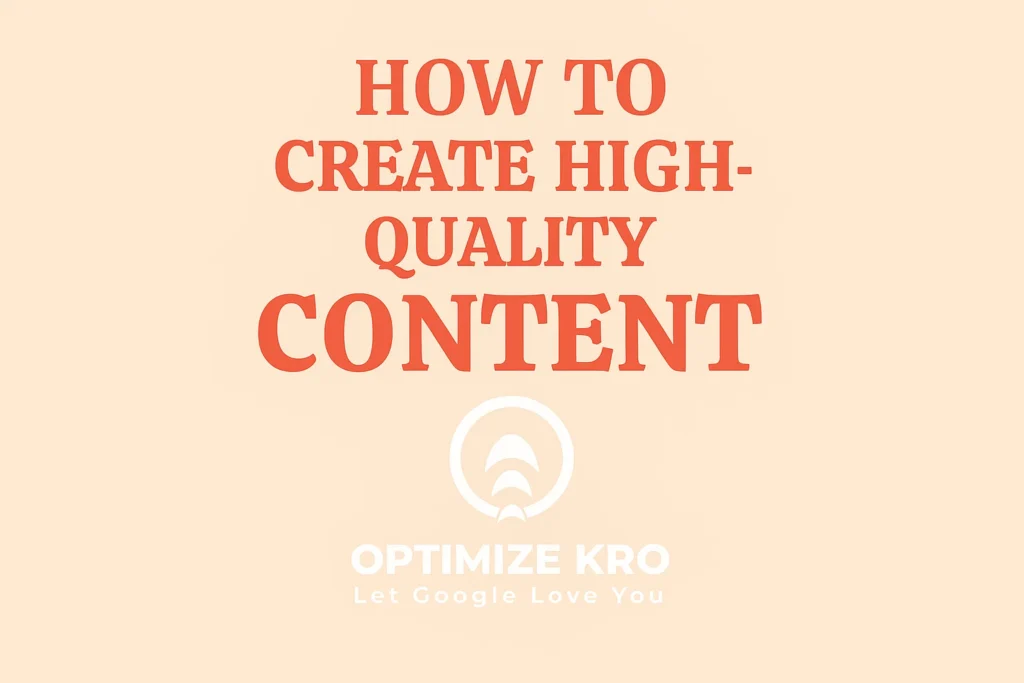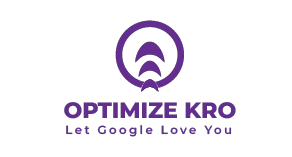In the digital world, content creation is at the heart of every business and individual’s online presence. Whether you’re running a blog, an e-commerce website, or just trying to boost your personal brand, high-quality content is key to capturing attention, driving engagement, and building trust with your audience.
However, creating quality content is not as simple as putting words together. It requires understanding your target audience, integrating the best SEO practices, and optimizing your content using Natural Language Processing (NLP) techniques to enhance its readability and relevance. In this article, we will walk you through the process of creating high-quality content with a focus on NLP optimization, and we’ll include helpful tips and techniques that will guide you.

What is High-Quality Content?
Before diving into the creation process, it’s essential to define what “high-quality content” means. High-quality content has the following characteristics:
- Relevance: It addresses the needs, concerns, and interests of your audience.
- Originality: It provides fresh insights, ideas, or perspectives.
- Engagement: It captivates your audience, encouraging them to interact with the content.
- Clarity: It is well-structured and easy to read.
- Value: It provides useful, actionable information.
The best content doesn’t just aim to inform, but also to entertain, engage, and provide real value to the reader. This is where NLP (Natural Language Processing) can make a difference in optimizing your content.
Why NLP Optimization is Essential for High-Quality Content?
Natural Language Processing is a branch of artificial intelligence (AI) that focuses on the interaction between computers and human language. It helps computers understand, interpret, and generate human language in a way that is both meaningful and contextually accurate.
When applied to content creation, NLP optimization allows you to:
- Enhance readability and flow: NLP can help improve sentence structure, grammar, and readability, ensuring that your content is easy to understand.
- Improve keyword optimization: NLP tools can help identify relevant keywords and phrases that resonate with your target audience, ensuring that your content ranks higher on search engines.
- Create more engaging content: NLP helps in detecting patterns, tone, and sentiment, enabling you to craft content that connects emotionally with your readers.
- Automate content refinement: NLP tools can assist in improving the tone, style, and even the overall quality of your writing.
Steps to Create High-Quality Content with NLP Optimization
1. Understand Your Audience and Intent
The first step in creating high-quality content is understanding who you’re writing for. This is crucial because content needs to resonate with the audience. Whether you’re writing a blog post, a social media caption, or a product description, the tone, language, and information should align with the needs and expectations of your target audience.
- Persona Development: Use demographic data, surveys, or feedback to create audience personas. These personas represent your ideal readers or customers, helping you tailor content more precisely.
- Content Intent: Determine whether the content is intended to inform, entertain, persuade, or educate. The intent will affect the tone, style, and structure of your content.
2. Conduct Comprehensive Keyword Research
SEO is integral to content creation, and keyword research is a vital step. The use of NLP tools like Google’s NLP API can help you identify keywords and phrases that are semantically relevant to your content.
- Primary Keywords: These are the main terms that your content should rank for.
- LSI (Latent Semantic Indexing) Keywords: These are related terms or phrases that enhance the context of your content, improving SEO.
- Long-Tail Keywords: More specific, less competitive keywords that help attract targeted traffic.
You can use tools like Ahrefs, SEMrush, and Google Keyword Planner to find the best keywords for your topic.
3. Create a Content Outline
Before writing, it’s essential to outline your content. A clear structure helps maintain focus and ensures that your message is coherent. Your content outline should include:
- Introduction: Captures attention and sets the context.
- Body: Organized into sections or subheadings to break down information.
- Conclusion: Summarizes key takeaways and provides a call to action.
NLP optimization tools like Grammarly and Hemingway can help you ensure that your outline and content adhere to readability standards.
4. Write with Clarity and Focus
When writing your content, keep the following best practices in mind:
- Short Sentences: Use simple and concise language. Avoid long, complicated sentences.
- Active Voice: Write in the active voice for more engaging and direct content.
- Avoid Jargon: Unless your audience is highly specialized, avoid using industry jargon that might confuse readers.
NLP tools can suggest sentence restructuring for improved clarity and flow.
5. Use Multimedia and Visual Content
Adding images, videos, infographics, and tables to your content makes it more engaging and can help break up the text. It also increases the chances of your content being shared on social media.
Table: Example Content Structure
| Section | Purpose |
|---|---|
| Introduction | Introduces the topic, hooks the reader. |
| Key Points | Provides the main content with detailed subheadings. |
| Visuals | Breaks down information and adds clarity. |
| Conclusion | Summarizes key points and encourages action. |
6. Integrate NLP Techniques for Optimization
After your content is written, it’s time to optimize it further with NLP. Here are some key techniques:
- Sentiment Analysis: NLP can analyze the sentiment of your content. For instance, if you’re writing a blog post about customer service, NLP tools can assess whether the tone is positive, neutral, or negative.
- Text Summarization: NLP can help create concise summaries for your content, which is especially helpful for long-form content like eBooks or guides.
- Entity Recognition: NLP tools can highlight key phrases, locations, people, or organizations, making it easier for search engines to index and understand your content.
What Our Clients Say
Trusted by contractors and local businesses for proven Local SEO Services.
John M. – General Contractor
“These guys transformed my Google Maps ranking. More calls, more local leads, and better visibility!”
Sarah L. – Roofing Business
“Within 3 months, my business went from page 3 to the top 3 listings. Highly recommend their Local SEO service!”
David K. – Plumbing Services
“Affordable and effective SEO. My local service calls doubled in less than 90 days.”
Best Practices for Content Optimization
- Improve Readability: Use tools like the Hemingway Editor or Readable to analyze readability scores. Aim for content that is at a 6th to 8th-grade reading level.
- Optimize Meta Descriptions and Titles: Craft compelling meta descriptions and titles using NLP tools to ensure keyword optimization and better click-through rates.
- Internal Linking: Link to relevant articles or pages within your site to improve navigation and SEO.
- Include CTAs (Call-to-Actions): Every piece of content should have a CTA that encourages the reader to engage further (subscribe, download, etc.).
- Optimize for Mobile: Ensure that your content is responsive and easy to read on mobile devices.
A1: You can measure the quality of content through engagement metrics (likes, shares, comments), readability scores, time spent on page, and SEO rankings. Tools like Google Analytics and SEMrush can track these metrics.
A2: NLP helps identify keyword patterns, optimize grammar, structure sentences, and even improve the sentiment and tone of content, ensuring it is both engaging and search engine-friendly.
A3: Use plagiarism-checking tools like Copyscape or Grammarly to ensure your content is unique. Additionally, create original ideas and insights that add value to your readers.
A4: Content should be updated regularly, especially if it’s related to current trends, news, or evergreen topics. Ideally, content should be reviewed and updated at least once a year.
Conclusion
Creating high-quality content involves more than just writing well. It requires a deep understanding of your audience, strategic use of keywords, and the application of NLP techniques to optimize your work. By following the steps outlined in this guide, you can create content that is both valuable and optimized for SEO, increasing its chances of reaching and engaging a larger audience.
By focusing on the quality, clarity, relevance, and optimization of your content, you’re setting yourself up for success in a highly competitive digital landscape.

Gulfam Qamar is a seasoned Local SEO expert with a proven track record of helping businesses boost their online visibility and dominate local search results. With deep expertise in Google Business Profiles, on-page optimization, and local citation strategies, Gulfam helps brands connect with nearby customers and grow sustainably. When he’s not optimizing websites, he’s sharing actionable SEO tips and insights to empower small businesses in the digital space.

